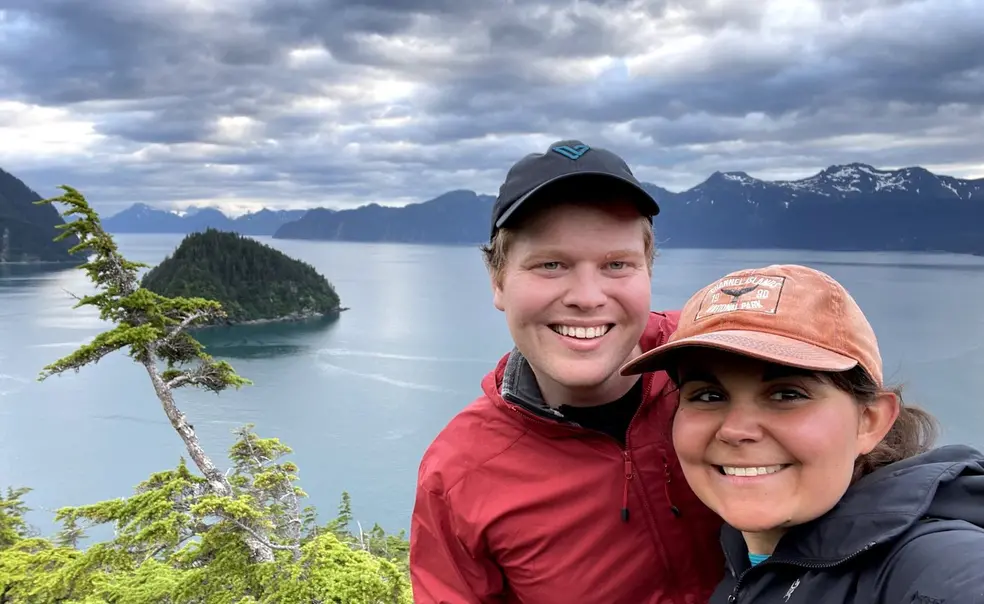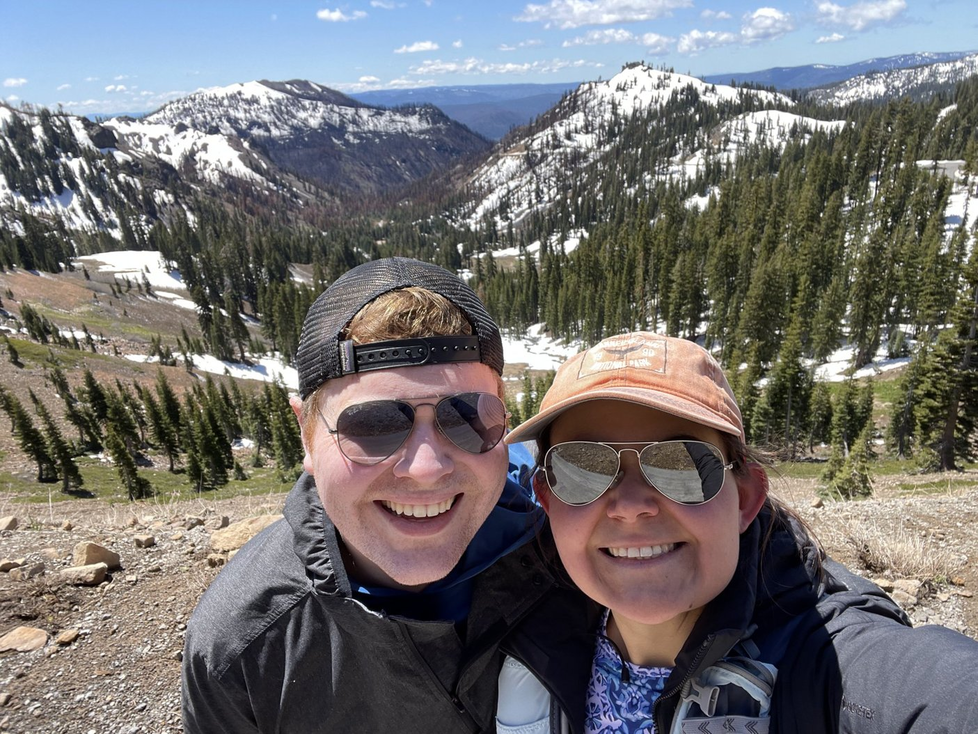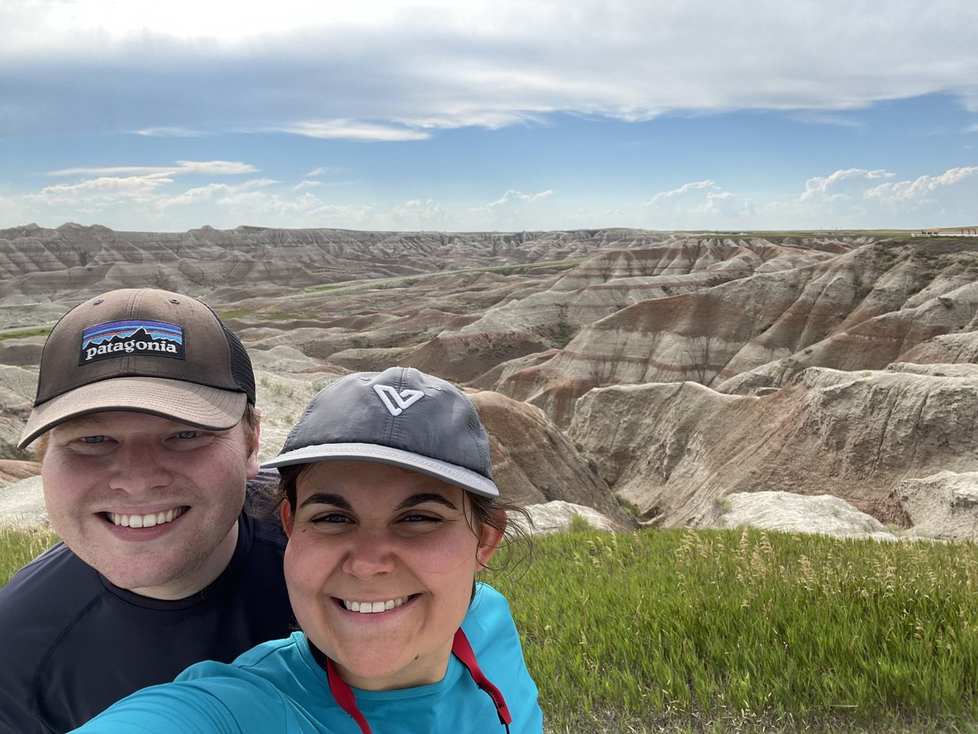Lauren Morera ’15 Has Visited Every National Park — Except One
Armed with a spreadsheet and maps, Morera and her husband are on a cross-country mission
In July 2020, Lauren Morera ’15 drove 10 hours from her parents’ house in Stewartsville, New Jersey, to the Great Smoky Mountains, a national park lining the Tennessee-North Carolina border. She and her now-husband spent the day hiking, slept at a nearby motel, and woke up to hike again. Later that day, they started a three-day drive to Hot Springs National Park in Arizona. Another long drive, another national park, another hike, another motel.
They followed this routine for five weeks, driving west through Arizona for, among other parks, the Grand Canyon, Mesa Verde, Arches, Capitol Reef, Bryce Canyon, and Zion. Then they headed up to Oregon and Washington, followed by Idaho, where they spent a week working remotely from a hotel room. Eventually, they started moving east again, traversing Montana and North Dakota, Iowa, Minnesota, Wisconsin, Illinois. They landed in Delaware to visit Morera’s family.
Morera, who majored in operations research and financial engineering (ORFE) at Princeton, kept a detailed log of the trip. She recorded driving times for each leg and calculated their total mileage. Everything went in an Excel spreadsheet, which she later converted into a PowerPoint presentation to show friends. She had originally mapped out the road trip to optimize visiting states — not national parks.
“It was kind of similar to the orange juice project at the end of senior year,” she says, referencing a Princeton ORFE class in which students are asked to optimize the distribution route for a fictional orange juice company. Morera now works as an investor at BV Investment Partners. “Looking at the map, figuring out where to go, figuring out how to make sure we weren’t driving too much on a workday so that we could get to the next place in a reasonable amount of time.”
By the end of 2020, Morera had spent at least one night in each of the 44 continental states.
“After that, every time we went on vacation or one of us had a work trip, we would try and parlay it into a park,” she says.
They established some rules: spend at least four hours in the park; complete one hike; find a map and stamp it with the official national park stamp. In five weeks, they saw 20 of the 62 national historical parks. A few months later, in December 2020, New River Gorge in West Virginia was upgraded from national river to national park, bumping the list up to 63.
Morera and her husband, who were married in June, have spent an afternoon watching Alaskan brown bears eat salmon in Katmai Park, an island only reachable by seaplane. They learned to scuba dive before visiting parks in Hawaii and the Virgin Islands. They spent their honeymoon last month in Hawaii and America Samoa, crossing off more parks. And they’ve observed the wide range in government-sectioned parks, from lakes and forests to manmade structures such as Gateway Arch in St. Louis, a 630-foot-tall stainless steel monument.
“There are [parks] that a lot of people know about — Yellowstone or Yosemite or the Grand Canyon — that are beautiful,” she says. But dozens of parks still “fly under the radar,” and these quieter, more remote ones are the trips she enjoyed most.
The last park left is Acadia, ironically the closest park to Boston. Morera is saving it for Sept. 15, her 30th birthday.














No responses yet